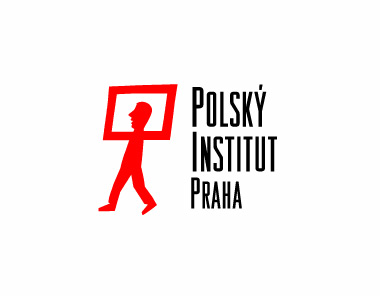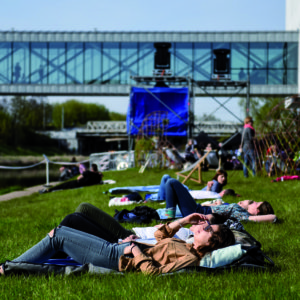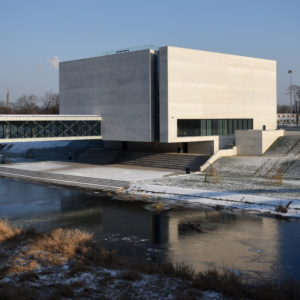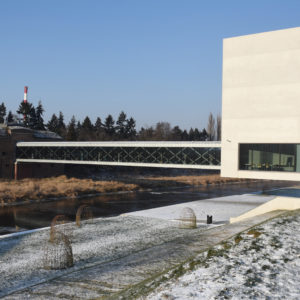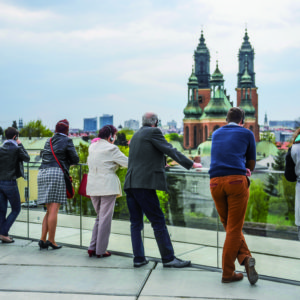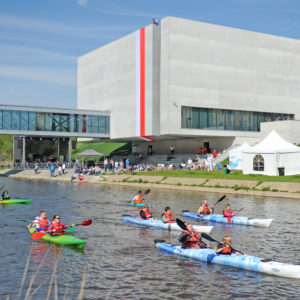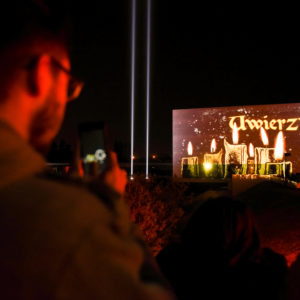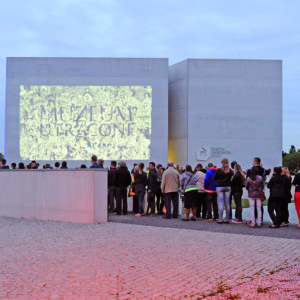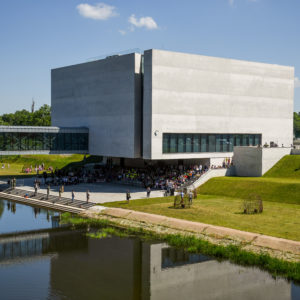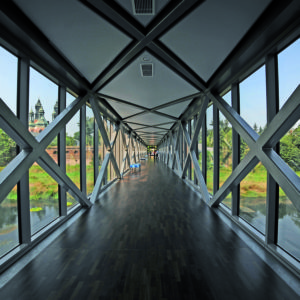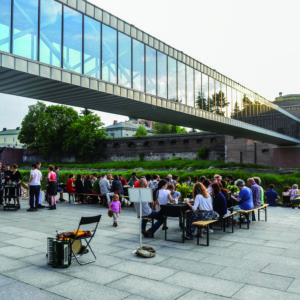Polský institut v Praze / Polish Institute in Prague
Malé náměstí 1
110 00 Praha 1
Česká republika / Czech Republic
+420 / 224 212 274
Porta Posnania / Gateway of Poznan
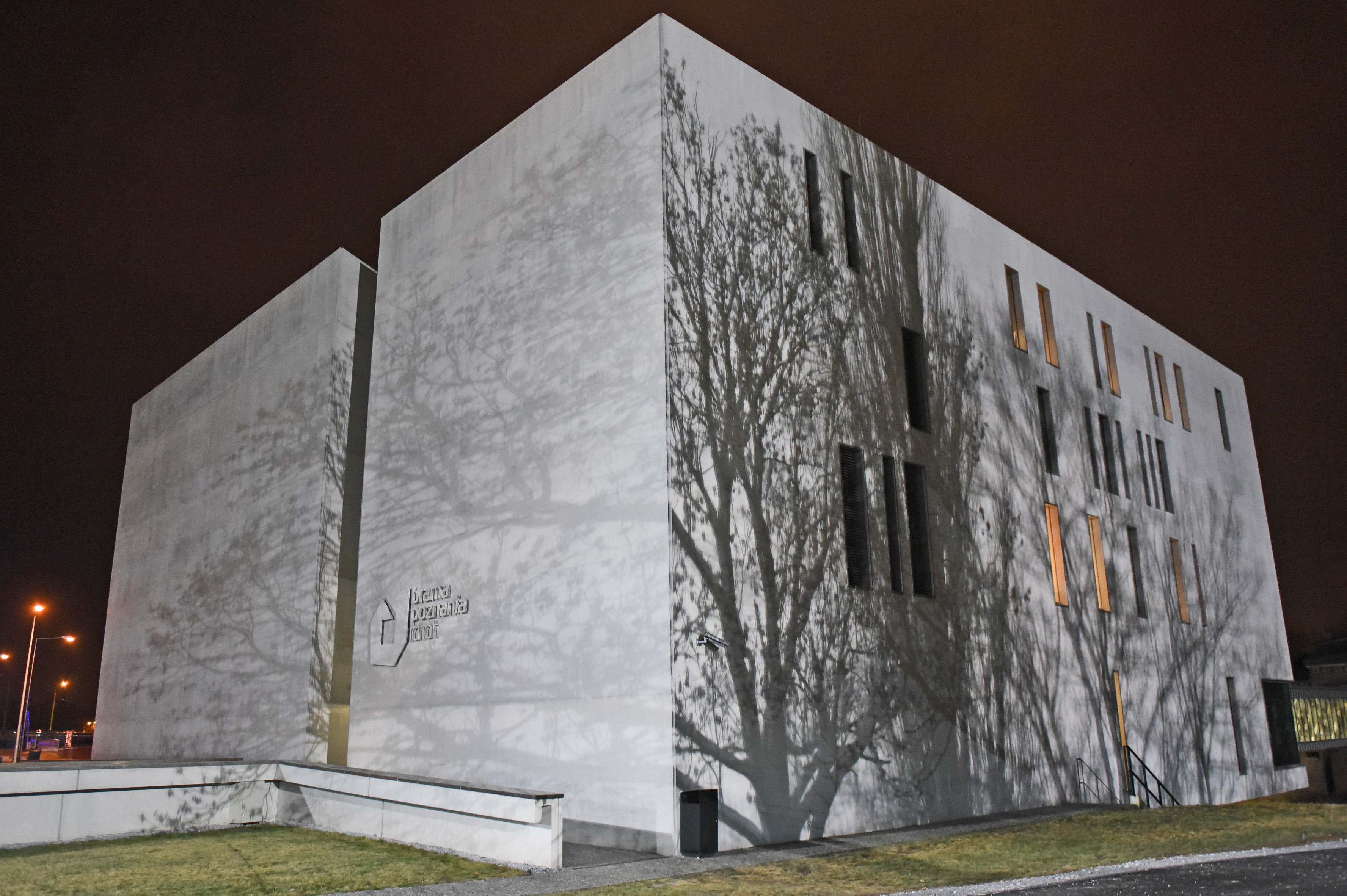 Finding the right balance between “the old” and “the new” at such an extraordinary and magical place like the Cathedral Island, was the biggest challenge.
Finding the right balance between “the old” and “the new” at such an extraordinary and magical place like the Cathedral Island, was the biggest challenge.
Maciej Wojda, architect, co-author of the building
An enigmatic concrete form and raw facade without windows is what attracts attention first of all. After a while when a visitor comes in, a narrow and tall hallway evokes a mild restlessness. Only in the distance, there arises a spectacular view dispelling any doubts: in the glass slot that intersects the mass of the building, you can see a familiar outline of the Poznań Cathedral. This image accompanies you on each visit of the interactive history center Porta Posnania, meaning “Gateway of Poznań”. It is showing the target.
The Gateway of Poznań connects two important areas: The Cathedral Island, a place associated with the beginnings of the Polish statehood and Christianity in Poland, and Śródka district, one of the oldest parts of the city. You can start your trip to the Cathedral Island in the exhibition and then go through a modern glass footbridge spanning the Cybina river to the Cathedral floodgate, which is a unique Prussian technical monument. The Gateway of Poznań was established as a center of interpretating the heritage, which fully corresponds to its form and function. This is not
a museum, because it does not store any collections. It is a modern center that encourages to encounter the cultural heritage directly on the spot, on the Cathedral Island in Poznań, and it prepares a visitor to this encounter. It is a multilayered testimony of more than a thousand year heritage of the city.
The main building of 32 x 32 x 15 meters is protruded with almost one third of its floor over the Cybina river bed, at the height of 12 meters. The safety of this design is ensured by thoughtful room layouts and by the effects of internal forces, as well as by appropriately selected materials. The Gateway of Poznań is the largest (in terms of area) building in Poland of exposed concrete. To reduce the load on the ceilings, modern technological solutions inspired by nature were used here. The building is constantly exposed to the threat of floods. However, no solution which would
mechanically separate the building from water was used here. The architecture is trying to be in harmony with the unpredictable nature: it is indeed the first public building in Poznań located beside the river after many years.
A modern body is connected with the historical building of the Cathedral floodgate, which is one of the last so wellpreserved fortification elements of the polygonal Poznań Fortress. This tiny part of the immense Prussian fortification system was built in 1834-1838 for military needs of controlling the level of the Cybina river. In the past, the river was cut through by huge door of the floodgates, and the wooden gate on the left bank bridgehead opened a passage to the other side. Today, the restored Cathedral floodgate again connects the island and the Śródka district. It introduces a visitor into the microcosm of architectural monuments, and it is the venue of many cultural events.
The architecture of Gateway of Poznań provokes. Despite the raw, minimalist look – the main building is devoid of any decorative elements – it arouses many emotions. It evokes elation and outrage, as it differs from the ambience of the Cathedral Island and Śródka. And it was this apparent contradiction, intended to emphasize the significance of historical buildings around, that charmed the juries of a number of architectural competitions. The building does not pretend anything, and it does not want to dominate. Though its complexion differs from the neighboring buildings at first sight, the enclosed space and proportion of the mass incorporates it into the surroundings. The space around is the most important context of this building.
A simple form does not refer to a simple meaning. A centerpiece of the Gateway of Poznań is represented by a slit intersecting the middle of the main building. It is the basic narrative, architectural and sightline axis. The light penetrating the slit is etherealizing the architecture, and it is a symbolic link between the old and the new. Also, the idea of the main multimedia exhibition is based on the light.
Creating the Gateway of Poznań is an integral part of many architectural and social changes in the Śródka district and the Cathedral Island. The building is an example of innovative approach to museology, architecture, public space and life of local communities – and this idea is innovative not only in the city, but also within the entire Poland. Building an open public space, among others on the bank of the Cybina river, in the café, or in the newly created Park under the plane trees, emphasizes the process of urban revitalization, which has been implemented in this area since 2006. The authors of architectural design follow the concept of “the third place” which was formulated by a sociologist Ray Oldenburg in the 80´s of the 20th century. He understood it as a resting place from duties, the place where you can look at others and be seen by them; a space that strengthens social bonds. It is just the people who give the crude Gateway of Knowledge its character.
Zdroj: Redakce AW – Orgnics City 2016, materiál vznikal ve spolupráci s Polským institutem v Praze





 Čeština
Čeština